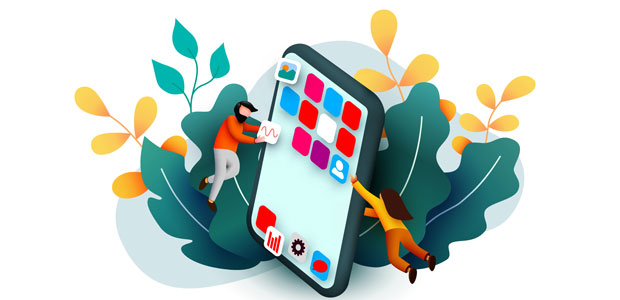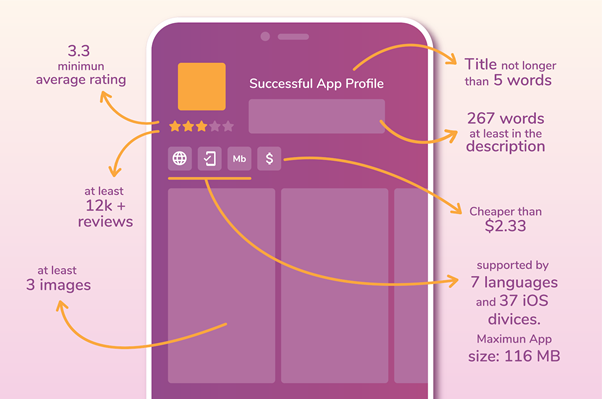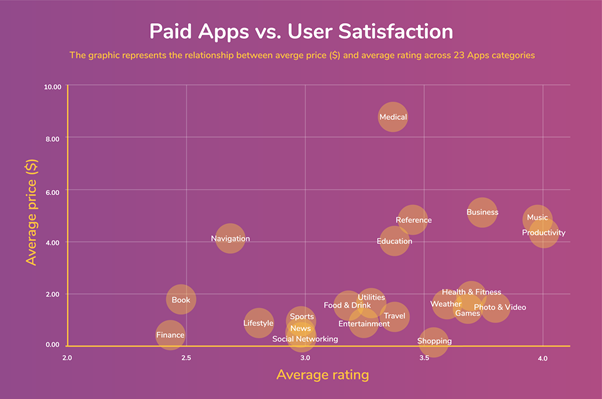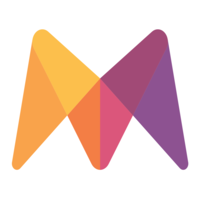
App Store 101: The checklist to achieving a ‘downloadable’ app
Mobile phones have become a basic necessity for everyone. With more than 3 Billion smartphone users in the world, equating to 4 out of every 10 people being equipped with smart technology, apps have become one of the fastest-growing markets in the IT industry. This creates infinite opportunities for businesses looking to break into or expand into the mobile realm.
Experts at online comparison service, money.co.uk, have performed a study revealing what businesses and entrepreneurs need to build a successful app. Analysing over 7,000 apps across 22 categories, the study delves into key factors such as the no. of reviews, average ratings, prices and more listing requirements, determining which apps perform best in the app store.
Developing an app can be challenging for both established and young businesses, so money.co.uk have created a comparison tool to help. The tool allows you to input your app store credentials, measuring these against competitor apps and providing insights into what the competition is like for the industry you are entering and how to optimise your app to do well on the app store.
Minimum app profile requirements
The study shows that new apps need at least 12,000+ reviews to appear on the app store’s top listings page, and should cost no more than (£1.75) $2.33. Technical information analysed also proves that apps should be supported by at least 37 devices, not use more than 116MB of space and the average no. of supported languages among the highest rated (4*) categories is 12.
The data goes on to show that app descriptions perform best when using short titles - no more than five 5 words with descriptions that include a minimum of three images and 267 words.

Paid Apps vs User Satisfaction
Looking at the correlation between the average price paid and user satisfaction (avg. ratings), Productivity and Music apps have the best correlation between both. These categories have the highest average ratings overall (4.0) and they are among the top five types of apps users consider worth spending more money on (the average price paid for music and productivity apps is £3.64 or $4.84 and £3.26 or $4.33 respectively).
Analysing the top types of apps people spend the most on, Business and Productivity Apps are the most promising categories, likely down to the rise in remote-working due to the pandemic. These apps have become an essential tool to increase efficiency and productivity when working from home, which explains their high average ratings and prices.
The Top 5 Apps People Spend the Most On
The Medical category ranks the highest by far for price paid for apps, costing £6.60 ($8.78) on average, almost four times more than the price app users typically pay. One would assume that a higher price equates to a higher user satisfaction, however findings indicate the opposite. Raising the question to their true purpose: are Medical Apps taking advantage by touting the immeasurable value of good health, ultimately influencing users’ economic behaviour? The lower user ratings suggest that medical apps need to provide better value for the high prices they warrant.

The Lowest Rated Apps
Receiving the lowest average ratings, Finance apps appear to be saturating app stores. While they claim to help users save and more wisely spend money, financial apps have an average rating of 2.4 and are struggling to achieve their objectives.
The study also reveals that the Books category has an average rating of 2.5, coming in as the second lowest rated category. However, poor user experience can be one of the reasons why an app won’t succeed - research indicates that reading books on a screen is less satisfying than reading a physical book, and in many fields indicates that reading from screens makes us read slower, learn and remember less, and sleep worse.
There are many reasons why an app succeeds or fails, but the data from money.co.uk indicates that a successful app has three main factors that determine success: the way it’s marketed, the user experience, and the functionality of the product itself. These three factors must work together to satisfy the end user’s needs. Apps are expected to provide a unique value to users, and establish that value quickly and effectively.
The full study and comparison tool can be found here.


